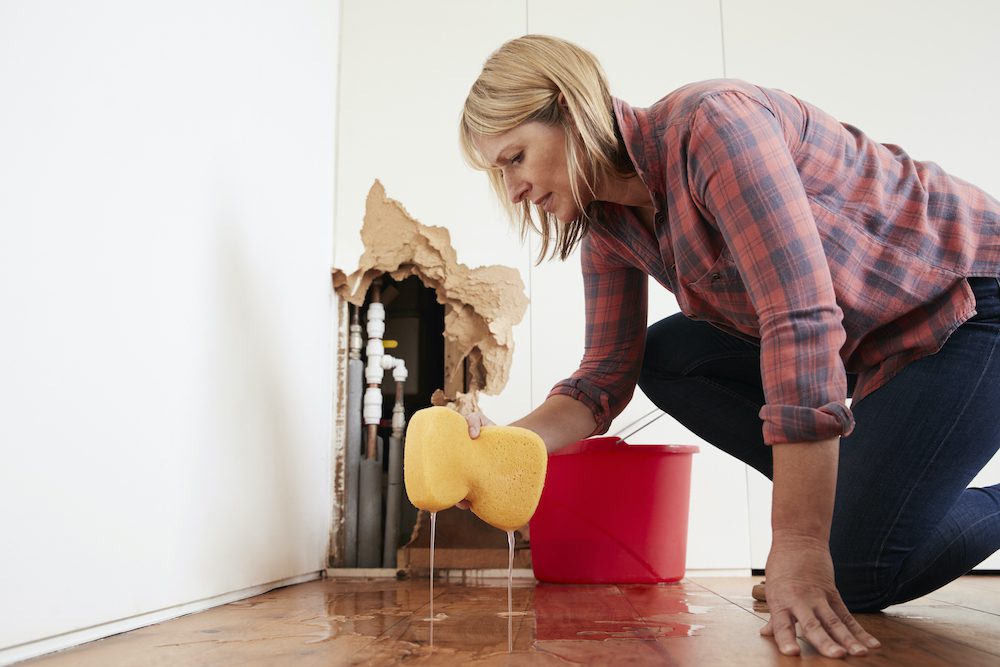6 Proven Techniques for Finding Hidden Water Line Leaks
6 Proven Techniques for Finding Hidden Water Line Leaks
Blog Article
Were you searching for tips on Detecting hidden plumbing leaks?

Early discovery of dripping water lines can reduce a possible disaster. Besides conserving you cash, it will minimize the aggravation as well as stress. The moment you discover a leakage, calling your plumber for repair services is the most effective service. Some little water leaks may not be noticeable. If you can not discover it with your nude eyes, here are some hacks that assist.
1. Check Out the Water Meter
Examining it is a surefire way that helps you uncover leaks. If it moves, that shows a fast-moving leakage. This implies you may have a slow leak that could also be below ground.
2. Inspect Water Usage
Examine your water costs as well as track your water usage. As the one paying it, you need to notice if there are any kind of inconsistencies. If you spot sudden changes, despite your consumption being the same, it indicates that you have leaks in your plumbing system. Remember, your water expense need to drop under the exact same variety on a monthly basis. An abrupt spike in your expense indicates a fast-moving leakage.
At the same time, a stable increase on a monthly basis, despite the same routines, shows you have a slow-moving leak that's additionally slowly intensifying. Call a plumber to thoroughly examine your property, particularly if you feel a warm location on your floor with piping below.
3. Do a Food Coloring Test
30% comes from toilets when it comes to water consumption. Test to see if they are running effectively. Decrease flecks of food color in the storage tank and wait 10 mins. If the color in some way infiltrates your bowl throughout that time without flushing, there's a leakage between the container and bowl.
4. Asses Outside Lines
Don't forget to inspect your outside water lines also. Needs to water leak out of the connection, you have a loose rubber gasket. One small leakage can lose lots of water and increase your water expense.
5. Evaluate as well as Assess the Situation
House owners must make it a routine to inspect under the sink counters and also inside closets for any kind of bad odor or mold development. These 2 warnings suggest a leak so punctual focus is required. Doing regular inspections, also bi-annually, can conserve you from a significant trouble.
If you know your home is currently old, maintain a watchful eye on your heating systems, hoses, pipelines and so on. Look for discolorations and weakening as the majority of home appliances and pipelines have a life span. They will additionally naturally deteriorate as a result of tear and put on. Do not wait for it to rise if you presume leaking water lines in your plumbing system. Call a specialist plumber as soon as possible so you don't wind up with an awful mess in your house.
Early discovery of leaking water lines can minimize a potential calamity. Some tiny water leakages might not be noticeable. Checking it is a proven way that assists you uncover leaks. One little leak can lose tons of water and also surge your water costs.
If you suspect leaking water lines in your plumbing system, do not wait for it to escalate.
How to Know If Your Home Has a Hidden Leak
Water Meter Reveals Inexplicable Water Usage
If you’d like to test whether or not there’s a leak somewhere in your home, you can do this using your water meter. Here is how to conduct the test:
Don’t use any water in your home for at least 30 minutes; this also means not turning on faucets or water-using appliances.
Go outside, and check your water meter for activity.
If your water meter shows that there was activity, even though no one was using any water, this proves that there is a leak in your home.Visible Mold or Mildew Growth
Leaks behind walls create moist, dark environments that allow mold and mildew to grow and thrive. Eventually, you might see mold growth forming on the wall closest to a hidden leak.
If mold is growing in an area that receives a high amount of moisture, such as a bathroom, it may simply be an indication that better ventilation is needed. However, if you see mold growth on a wall or the ceiling in an area where you would not expect, you probably have a hidden leak.
Musty, Mildew Odor
Sometimes you might not be able to see the mold or mildew that is growing as a result of a leak. However, the smell can give the problem away just as easily. If you catch a whiff of something musty, there’s a good chance that old water is collecting somewhere in your home that you can’t see.
Stained/Warped Walls, Ceilings, or Floors
When your home soaks up water, a variety of red flags can become visible, including ceiling stains, bubbling drywall, warped walls, and sagging floors. While these issues can be caused by excess humidity, they can also be signs that a pipe or plumbing connection has started leaking behind your walls.
Inexplicably High Water Bill
After a while, you get a general sense for what your water bill should be. If you own a pool or sprinkler system, your bill will tend to be higher during summer. However, if you receive a water bill that seems especially high, and you can’t figure out what caused it, then you may have a hidden leak somewhere that’s increasing your bill.
https://www.plumbingjoint.com/blog/2019/july/how-to-know-if-your-home-has-a-hidden-leak/

I stumbled upon that review on Detecting hidden plumbing leaks when exploring the web. Enjoyed reading our write up? Please share it. Help other people locate it. Thank you for your time. Come back soon.
Effective fix? Call! Report this page